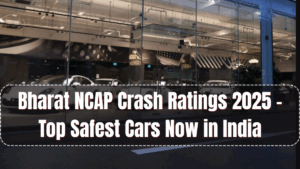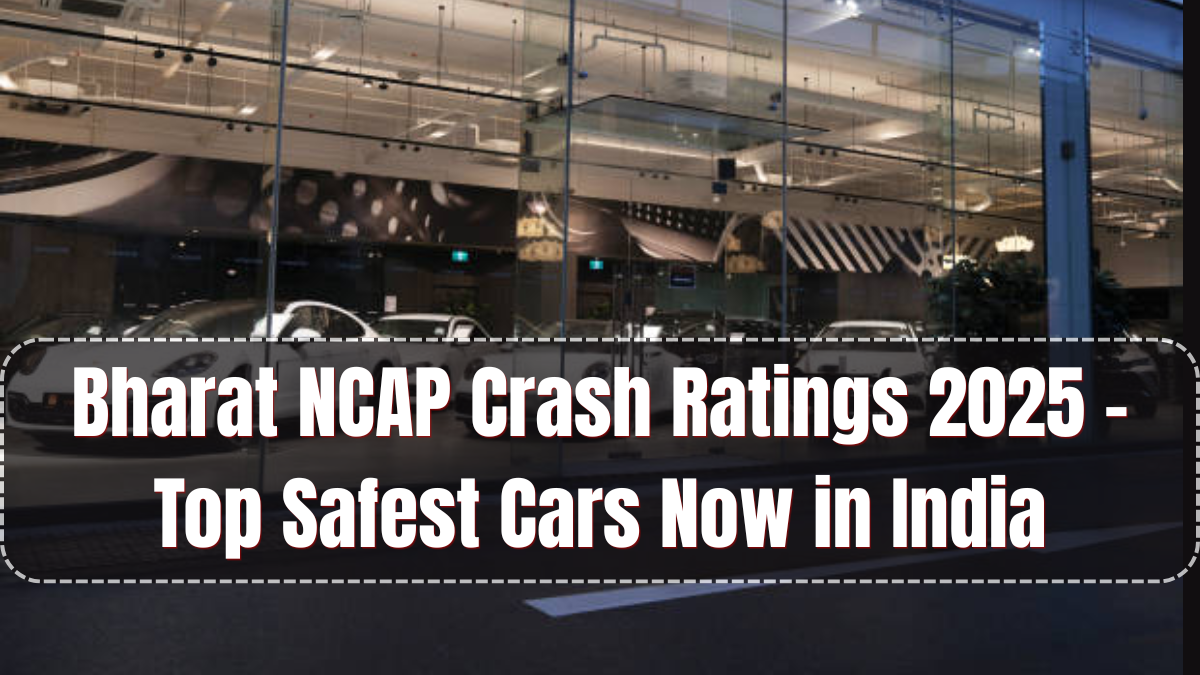Bharat NCAP (New Car Assessment Program) has released the 2025 crash test results, and they mark a significant leap forward in India’s vehicle safety standards. The updated ratings give Indian consumers a transparent view of how safe their cars are in real-world crash scenarios.
With stricter protocols and mandatory participation, more manufacturers are submitting their models for crash evaluation than ever before. The initiative is a milestone in the Government of India’s push for safer roads and better passenger protection.

What Is Bharat NCAP?
Bharat NCAP is India’s official car safety rating system, modeled after global benchmarks such as Euro NCAP and Global NCAP. It evaluates passenger vehicles based on their performance in frontal crash, side-impact, and pedestrian protection tests.
In 2025, the crash testing is conducted at designated government-approved facilities using state-of-the-art dummies and sensors. The vehicles are scored on a scale of 0 to 5 stars across:
-
Adult Occupant Protection (AOP)
-
Child Occupant Protection (COP)
-
Safety Assist Technologies
Key Changes in 2025 Protocols
The 2025 update introduced more comprehensive test requirements to better reflect Indian road realities:
-
Side pole impact test added for cars above ₹10 lakh
-
ESC (Electronic Stability Control) now mandatory for 4-star rating and above
-
Seatbelt reminder and pedestrian protection tech evaluated more strictly
-
Child safety seat compatibility included in scoring criteria
This makes the Bharat NCAP 2025 ratings closer in stringency to Euro NCAP standards, helping consumers make more informed buying decisions.
Top-Scoring Cars in 2025
Here are the top performers under the new Bharat NCAP ratings:
| Car Model | Adult Rating | Child Rating | Safety Features Included |
|---|---|---|---|
| Tata Safari (2025) | 5 Stars | 4 Stars | 6 airbags, ESC, ISOFIX, pedestrian alert |
| Mahindra Scorpio-N | 5 Stars | 3 Stars | ESC, dual front airbags, side impact safety |
| Hyundai Verna (2025) | 4 Stars | 4 Stars | ABS, seatbelt reminders, pedestrian protection |
| Maruti Suzuki Brezza | 4 Stars | 3 Stars | Dual airbags, rear parking sensors |
| Toyota Hyryder | 4 Stars | 4 Stars | 6 airbags, traction control |
Tata and Mahindra continue to dominate the safety segment with robust SUV designs and a strong focus on structural integrity.
Why Bharat NCAP Matters
Until recently, Indian car buyers had limited access to credible vehicle safety data. With the rollout of Bharat NCAP:
-
Buyers can now compare cars based on safety, not just price or mileage
-
Automakers are motivated to improve vehicle engineering to gain market trust
-
Insurance providers may offer better premiums for higher-rated cars
-
The government can use the data to enforce safety benchmarks for future manufacturing
This aligns with the broader goal of reducing road fatalities, which continue to be a serious concern in India.
Industry Impact
-
Car manufacturers are redesigning models with reinforced cabins and additional airbags
-
Component suppliers are focusing more on safety tech like collision sensors and ESC modules
-
Consumer awareness is increasing, with safety now influencing purchase decisions in urban and semi-urban markets
-
Export potential for Indian-made cars is improving due to internationally recognized safety standards
FAQs
What is the minimum safety standard for Bharat NCAP testing in 2025?
Cars must come equipped with dual front airbags, ABS, and seatbelt reminders to qualify for a minimum rating.
Is Bharat NCAP testing mandatory for all vehicles?
As of 2025, it is mandatory for all new models and variants above ₹5 lakh to undergo crash testing under Bharat NCAP.
Can I check my car’s Bharat NCAP rating online?
Yes, you can visit the Bharat NCAP portal or check with your car manufacturer for the specific safety rating.
Do these ratings affect resale value?
Yes, vehicles with higher Bharat NCAP ratings generally enjoy better resale value due to higher consumer trust.
Are these tests done in India?
Yes, all crash testing under Bharat NCAP is conducted at approved Indian facilities following updated international protocols.
Click here to know more.
